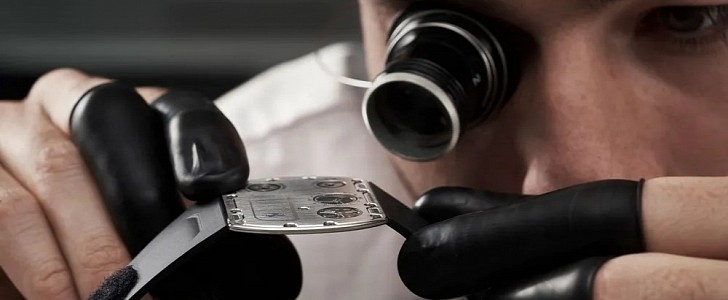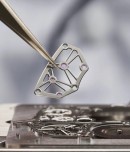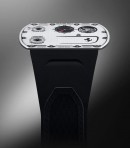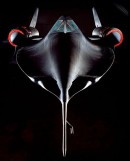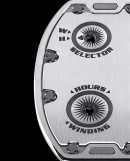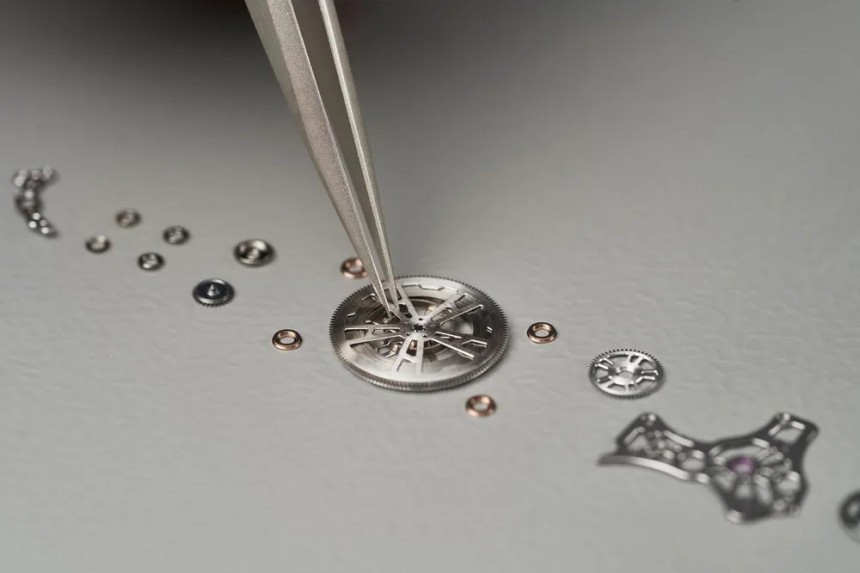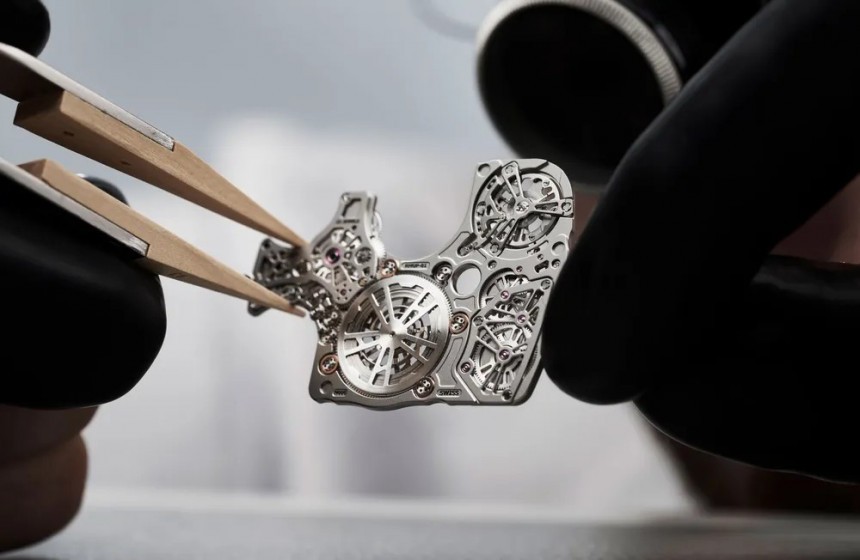Ferrari – the epitome of superlatives in the automotive multiverse. Fast, Famous, Flamboyant, Fascinating, Flirtatious, Fun, Forthright, Fundamental, Florid, Fancy, Feisty, Fervid, Frisk, Fiery. Thin. Titanium. Time. Wait, What?! Those are not F-Words. True. But they tell a tale of tremendous technological achievement from Ferrari's exclusive partnership with Richard Mille, the exclusive watchmaker. Made possible by the six decades-old SR-71 Blackbird hyper-jet.
Six decades ago, a global dominance spy game spawned a new technology that would alter history forever. Cold War intelligence gathering efforts of the USA meant no expenses were too high for achieving supremacy over its archrival. Back in the day, a faster-than-everything spy plane was needed. SR-71 Blackbird came around and took the world by storm. From a technological standpoint, the story of the aircraft is truly a standard setter, for it took engineers and scientists a whole new approach to meet the demands of the Pentagon.
Enter titanium: chosen for its numerous qualities that perfectly matched the specs of the yet-to-be-bord airplane, the chemical element gave the development team countless headaches. From sourcing the raw material (it came straight from the Soviet Union, by the way, the country at which the SR-71 was aimed at), to building the tools and machines needed to transform titanium into aircraft, everything was challenging. Ironically, it wasn't the propulsion that was the problem in exceeding and sustaining Mach 3 atmospheric flight speeds. No, the engines were fine. It was the heat that the airplane's fuselage would need to endure that was the obstacle.
After vast expenditures and trials and failures, the SR-71 took to the air and made history. All thanks to a very stubborn element – titanium. Come the third millennium, and titanium is called back into action, but for a very different – although similarly intricate in making – purpose.
Think the equivalent of Ferrari in wristwatches and put all other mere time-telling wrist-strapped devices aside. Enter Richard Mille's RM UP-01 Ferrari. The offspring of this thoroughbred alliance is the thinnest mechanical wristwatch ever made until now. 0.068 inches (1.75 millimeters) thin, shaving off 0.002 in (0.05 mm) from the previous record holder.
The RM UP-01 is a daily watch intended to resist the shakes of a sheik's handshake after a most exclusive game of golf just as well as it can tackle HALO parachute jumps. A masterpiece of timekeeping, this jewel of mechanical prowess is nothing short of a monument. Ferrari's unique race-winning-derived expertise on high-performance materials allowed the breathtaking engineering, all the while its uncompromising pursuit of success translated into accuracies measured in one-thousandth of a millimeter.
A brilliant example of extreme manufacturing, the watch is an expression of absolute performance: capable of taking on accelerations far beyond everything within human abilities, RM UP-01 works fine even when subjected to forces 5,000 times greater than Earth's gravity.
And if you think the engineering is staggering, look at the materials. Given its confined dimensions and shape and keeping up with Richard Mille's standards, steel wasn't suitable for the job. So Titanium was preferred.
The absolute precision of the movement is doubled by a 45-hour energy reserve between manual windings. So this brings the question of Richard Mille's choice for this somewhat obsolete means of powering up a watch. In a world of Smarteverything, from watches to cars, being able to connect with a pure mechanical gearing gives the wearer a sense of something that cannot be rivaled by any chip-bearing gadget: a soul. Just as our very own hearts tick us into life, the RM UP-01 manual winding puts the watch closer to a human heart more than anything else a contemporary human might wear on a daily basis.
Very similar to a manual gearbox in a classic Ferrari, wouldn't you say? It's the sheer feeling of control we get from being able to tell a car when it's time to rev up just as you exit the corner of a fast right-hander on a casual Sunday morning at the track. It's that unmistakable emotion of hearing the watch whirl eight times every second that makes the blood rush faster as you put the pedal to the metal at the beginning of the long straight, battling the brutality of a highly precise chronograph for that last triumphant hundredth of a second.
So yes, this ultra-thin, ultra-flat, and ultra-all-around superb example of craftmanship bears witness to the daring and cutthroat determination of engineers from both high-end watchmaking and purist racecar manufacturing. With tolerances going as low as 1 micron and space-age materials, the watch is a monumental landmark in humanity's perpetual race against time. Just what fast cars and racing have forever pursued.
It took the watchmaking company years of development, over a dozen prototypes, and 6,000 hours of extensive testing to put this watch ahead of everyone else. But, by time itself! have they done it.
Enter titanium: chosen for its numerous qualities that perfectly matched the specs of the yet-to-be-bord airplane, the chemical element gave the development team countless headaches. From sourcing the raw material (it came straight from the Soviet Union, by the way, the country at which the SR-71 was aimed at), to building the tools and machines needed to transform titanium into aircraft, everything was challenging. Ironically, it wasn't the propulsion that was the problem in exceeding and sustaining Mach 3 atmospheric flight speeds. No, the engines were fine. It was the heat that the airplane's fuselage would need to endure that was the obstacle.
After vast expenditures and trials and failures, the SR-71 took to the air and made history. All thanks to a very stubborn element – titanium. Come the third millennium, and titanium is called back into action, but for a very different – although similarly intricate in making – purpose.
The RM UP-01 is a daily watch intended to resist the shakes of a sheik's handshake after a most exclusive game of golf just as well as it can tackle HALO parachute jumps. A masterpiece of timekeeping, this jewel of mechanical prowess is nothing short of a monument. Ferrari's unique race-winning-derived expertise on high-performance materials allowed the breathtaking engineering, all the while its uncompromising pursuit of success translated into accuracies measured in one-thousandth of a millimeter.
A brilliant example of extreme manufacturing, the watch is an expression of absolute performance: capable of taking on accelerations far beyond everything within human abilities, RM UP-01 works fine even when subjected to forces 5,000 times greater than Earth's gravity.
And if you think the engineering is staggering, look at the materials. Given its confined dimensions and shape and keeping up with Richard Mille's standards, steel wasn't suitable for the job. So Titanium was preferred.
Very similar to a manual gearbox in a classic Ferrari, wouldn't you say? It's the sheer feeling of control we get from being able to tell a car when it's time to rev up just as you exit the corner of a fast right-hander on a casual Sunday morning at the track. It's that unmistakable emotion of hearing the watch whirl eight times every second that makes the blood rush faster as you put the pedal to the metal at the beginning of the long straight, battling the brutality of a highly precise chronograph for that last triumphant hundredth of a second.
So yes, this ultra-thin, ultra-flat, and ultra-all-around superb example of craftmanship bears witness to the daring and cutthroat determination of engineers from both high-end watchmaking and purist racecar manufacturing. With tolerances going as low as 1 micron and space-age materials, the watch is a monumental landmark in humanity's perpetual race against time. Just what fast cars and racing have forever pursued.
It took the watchmaking company years of development, over a dozen prototypes, and 6,000 hours of extensive testing to put this watch ahead of everyone else. But, by time itself! have they done it.
